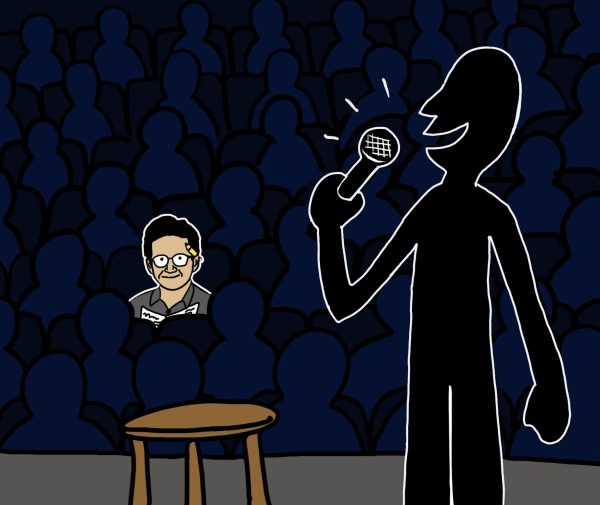Production of ‘Blood at the Root’ offers community, self-reflection
The ETHS theater department kicked the new semester off with Dominique Morisseau’s Blood at the Root. Based on true events that happened in Jena, Louisiana in 2006, the diverse cast delivers a unique adaptation of the story.
The play begins with an introduction to the ‘white tree,’ from which the whole conflict arises. When a few students, including main character Raylynn, decide they want to sit under this tree to combat the segregation within the school, they are met with an anonymous backlash and find nooses hung from the branches. The remainder of the play follows the reactions of members of the student body, such as newspaper reporters, Justin and Toria; football player, Deandre; transfer student, Colin and Raylynn’s best friend, Asha. The play features discussions surrounding issues such as race, homophobia and social justice that are both compelling and thought provoking.
“I think the final production went really well, and I’m glad ETHS got the chance to share this important message that’s still extremely relevant today,” junior Frances Eccelston (Toria) says.
Much time and effort went into successfully putting on this performance. Rehearsal began shortly after the cast list was released, in early January, and consumed two hours after school as well as Saturdays.
“It’s very experimental, so I’ve definitely had to have been pushed outside my comfort zone.” senior Helen Davis, who plays Asha, comments.
“There are moments that feel absurdist, like the tree that Raylynn sits under is a human tree, made by members of the cast. There’s a surrealism part to it, because there are a lot of body percussion sequences where we create beats and marches with our bodies and express things through movements,” says sophomore Orlagh Reardon, who was a part of the Power Squad ensemble.
As well as rehearsals, the cast participated exploring the topic itself; a full day was dedicated to this.
“And it was just really interesting to hear about, because I was really going off of the little bit of the audition information, but knowing about all [of the context around the play]just made the story seem so much more important,” freshman Rylee Noffsinger, a member of the Power Squad ensemble, says of that day.
According to Reardon, topics explored include listening to the song Strange Fruit by Billie Holiday, upon which the play is based, learning about important civil rights leaders like Martin Luther King and Malcolm X as well as justifications for why each character might act the way they do.
“For example, Asha is [the main character’s] best friend. She sort of perceives herself as like Black by association, even though she is white. She’s willing to spend all this time with her Black friends, but as soon as they stick their necks out on the line to protest, she decides she doesn’t want to get into trouble.”
“It definitely tackles race in a way that a lot of major productions don’t,” Davis shares.
But while there is a great deal of creativity and reimagining, Reardon reinforces the fact that the most important parts of the story are based in realism, “This fight against racism and homophobia—it’s never going to be over,” she says. “We must constantly be fighting. The minute we stop is when we let it take over our lives… Everyone is struggling with something different. We need to be aware of that. We need to be kind to one another.”
Your donation will support the student journalists of the Evanstonian. We are planning a big trip to the Journalism Educators Association conference in Philadelphia in November 2023, and any support will go towards making that trip a reality. Contributions will appear as a charge from SNOSite. Donations are NOT tax-deductible.











